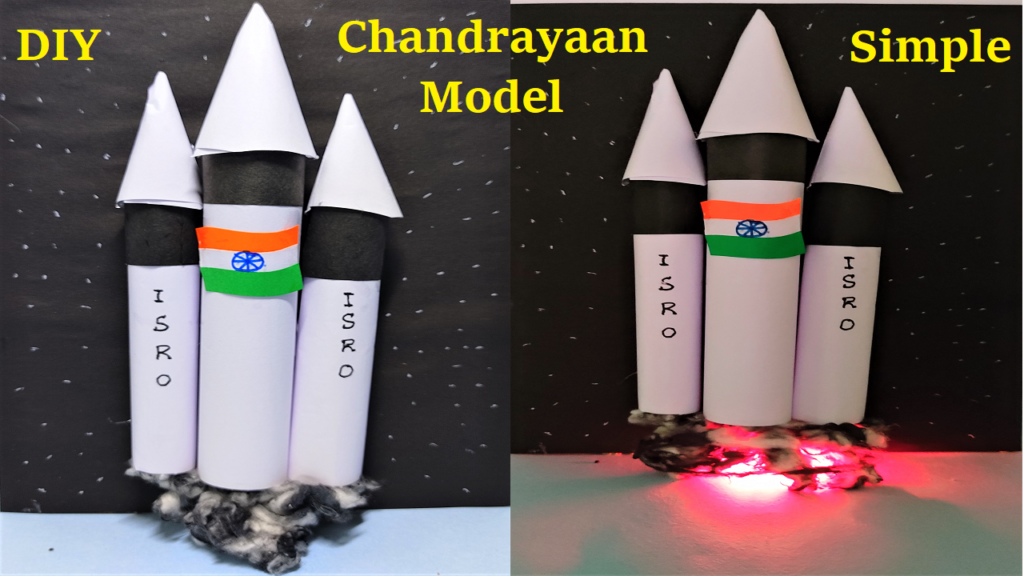Introduction:
The Chandrayaan 3 mission is poised to be another milestone in India’s space exploration journey. Following the success of Chandrayaan 1 and Chandrayaan 2,

This ambitious mission aims to further deepen our understanding of the Moon’s surface and unlock new scientific insights.
In this project file, we will delve into the various aspects of Chandrayaan 3, including its objectives, mission components, technological advancements, and the expected impact on India’s space endeavors.
The Genesis of Chandrayaan 3
Background of India’s Lunar Missions:
Chandrayaan 1: India’s Maiden Lunar Mission
Chandrayaan 1, launched by the Indian Space Research Organisation (ISRO) in 2008, marked India’s entry into lunar exploration.
It was a significant milestone in the nation’s space program. The mission’s primary objectives were to orbit the Moon, create a detailed 3D map of its surface, analyze the distribution of elements and minerals, and search for water molecules.
Chandrayaan 1 was equipped with 11 scientific instruments, including spectrometers and imagers, to achieve its goals. It discovered water molecules on the lunar surface, particularly in the polar regions, changing the understanding of the Moon’s composition. The mission operated successfully until August 2009, when it lost communication with ISRO. Despite this, Chandrayaan 1 provided a wealth of valuable data and insights into lunar science.
Chandrayaan 2: Advancing Lunar Exploration
Launched in 2019, Chandrayaan 2 was India’s second lunar mission and a significant leap forward in sophistication and ambition.
It consisted of three components: the Orbiter, the Vikram Lander, and the Pragyan Rover. The mission aimed to study the topography, mineralogy, exosphere, and search for water ice on the Moon’s south pole region.
The Orbiter carried eight scientific instruments, including spectrometers, cameras, and a synthetic aperture radar, to study the Moon from orbit.
The Vikram Lander, equipped with various payloads, was designed to make a soft landing on the lunar surface. Unfortunately, during the descent, the lander lost communication and crash-landed.
Despite the setback with the lander, the Orbiter continues to operate successfully, providing valuable data on the Moon’s surface and exosphere.
Both Chandrayaan 1 and Chandrayaan 2 have significantly contributed to our understanding of the Moon, with Chandrayaan 2 laying the groundwork for future lunar exploration endeavors.
These missions have established India as a credible and capable player in the global space community, opening doors for more ambitious interplanetary missions in the years to come.
Significance of Chandrayaan missions in India’s space exploration endeavors.
Need for Chandrayaan 3:
The need for Chandrayaan 3 arises from several key factors, each contributing to the overall advancement of India’s space exploration program:
- Mission Continuity: Chandrayaan 2, while successful in placing an orbiter around the Moon, faced challenges with the Vikram Lander’s descent. Chandrayaan 3 provides an opportunity to complete the mission’s original objectives, including a successful soft landing.
- Technological Refinement: Lessons learned from Chandrayaan 2’s landing attempt can be applied to Chandrayaan 3. This allows for the refinement of technologies related to landing systems, navigation, and communication, thereby increasing the chances of a successful landing.
- Enhanced Scientific Exploration: Chandrayaan 3 can build on the scientific instruments and experiments planned for Chandrayaan 2’s lander and rover. This would enable more comprehensive studies of the Moon’s surface, mineralogy, and potential water ice in the lunar south pole region.
- International Collaboration: Collaborations with other space agencies or international partners for Chandrayaan 3 can lead to knowledge-sharing, access to advanced technologies, and a more diverse pool of expertise, further enhancing the mission’s chances of success.
- National Pride and Inspiration: Chandrayaan missions symbolize India’s capabilities in space exploration and instill a sense of national pride. Success with Chandrayaan 3 would inspire the nation, particularly the youth, to pursue careers in STEM fields and space science.
- Strategic Positioning: Demonstrating the ability to successfully conduct lunar missions places India in a strategic position in the global space community. It strengthens India’s credibility as a reliable partner in international space endeavors.
- Economic and Technological Spin-offs: The research, development, and innovation required for Chandrayaan 3 have the potential to yield economic and technological benefits beyond the mission itself. Advances in space technology often lead to spin-off technologies with applications in various industries.
- Long-Term Vision for Lunar Exploration: Chandrayaan 3 can serve as a stepping stone for India’s future lunar missions. It lays the foundation for more ambitious endeavors, including potential human exploration or resource utilization on the Moon
This project file provides a detailed overview of Chandrayaan 3, encompassing its objectives, mission components, technological advancements, and anticipated scientific discoveries. It serves as an informative resource for understanding the significance of this mission in the context of India’s space exploration endeavors.

